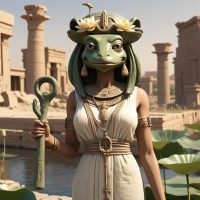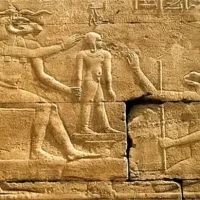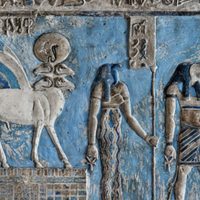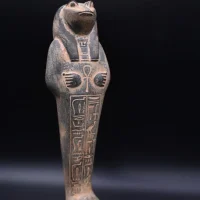Umai : Goddess of Fertility
Listen
At a glance
| Description | |
|---|---|
| Origin | Kazakh Mythology |
| Classification | Gods |
| Family Members | N/A |
| Region | Kazakhstan, Kyrgyzstan, Uzbekistan, Turkmenistan, Mongolia, Russia, Turkey, China |
| Associated With | Fertility, Childbirth |
Umai
Introduction
Umai, known as Umai Ana in Kazakh mythology, is one of the most sacred and enduring deities in the spiritual heritage of the Kazakh people. As the goddess of fertility, motherhood, and protection, she embodies the nurturing essence of life and family. Deeply rooted in the pre-Islamic belief system of Tengrism, Umai represents the divine feminine counterpart to Tengri, the supreme sky god. Among the Kazakhs, she was revered as the invisible guardian who watched over mothers, children, and the home—ensuring the continuity and harmony of both families and the nation. Ancient Turkic inscriptions, such as those found in the Orkhon Valley, mention Umai as a celestial power associated with victory, prosperity, and life itself, reflecting her prominence across the Turkic world but especially in the nomadic spiritual landscape of Kazakhstan. Her enduring symbolism connects the Kazakh people to their ancestral beliefs, where the bond between humanity, nature, and the divine mother remains sacred.
Physical Traits
In Kazakh mythology, Umai is often portrayed not as a warrior goddess or ruler but as a luminous maternal figure—a being of compassion and light. Descriptions emphasize her golden aura, radiant face, and hair that shines like the rays of the sun, representing both fertility and the life-giving warmth of the Kazakh steppe. Her color is yellow or gold, the hues of vitality and prosperity that symbolize the ripened grain and sunlight central to Kazakh pastoral life. Oral traditions describe her as a woman in flowing white garments, a color associated with purity, motherhood, and spiritual protection. Although rarely depicted in physical form, her presence is believed to manifest in the laughter of children, the fertility of the land, and the gentle warmth of the sun over the open plains. In Kazakh folk art and contemporary paintings, she sometimes appears with a child in her arms, surrounded by motifs of birds, trees, and flowing light—all symbols of her nurturing spirit and connection to the natural cycles of the earth.
Family
In Kazakh cosmology, Umai is both a celestial mother and an integral part of the divine triad alongside Tengri, the sky god, and Yer-Sub, the spirit of the earth and waters. She represents the feminine balance to Tengri’s masculine creative force, forming the foundation of life through harmony between the heavens and the earth. Kazakh legends often refer to Umai as Umai Ana, a divine mother to all children and the spiritual protector of the Kazakh lineage. In ancient times, the wives of khans and tribal leaders were called “Umais,” symbolically linking their role as bearers of heirs and caretakers of the tribe’s future with the goddess’s divine fertility. This connection between leadership, motherhood, and divine blessing highlights Umai’s dual function as both a personal protector and a symbol of collective well-being. Through her, the continuity of the Kazakh people—spiritually, socially, and biologically—was believed to be sustained.
Other names
Among the Kazakhs, Umai Ana (Mother Umai) is the most common and revered form of her name. The word “Ana,” meaning “mother,” reflects her role as the universal caregiver and guardian of family life. Variants like Ymai or Omai also appear in ancient oral poetry and folk songs, demonstrating the linguistic fluidity of Turkic languages while preserving her sacred maternal identity. Across other Turkic regions, she is known as Umai Ene in Kyrgyz, Umai Ona in Uzbek, and Umai Ana in modern Turkish culture—but in Kazakh tradition, the image of Umai Ana holds a particularly strong emotional and cultural resonance. Her name itself is used as a symbol of warmth and protection; for example, a mother’s blessing or lullaby might invoke Umai’s name to wish health and safety upon a child. The name Umai remains a popular given name for Kazakh girls today, symbolizing beauty, grace, and divine protection.
Powers and Abilities
Umai’s powers in Kazakh mythology extend across the physical, spiritual, and cosmic realms. She is primarily the goddess of fertility and childbirth, ensuring that mothers bear healthy children and families thrive in abundance. Her blessings are said to bring life to barren lands, peace to households, and strength to children. In traditional Kazakh belief, a child’s smile or laughter indicated Umai’s presence, while a child’s persistent crying or illness suggested her departure—prompting elders or shamans (baksys) to perform rituals or prayers to invite her return. These rituals, often conducted by female shamans, included offerings of milk, white cloth, and fire, symbolizing purity, nourishment, and life.
Umai was also believed to protect children’s souls, which were considered delicate and vulnerable to malevolent spirits. The Kazakhs believed that the kut—a person’s life force or divine energy—was safeguarded by Umai from infancy through adulthood. She was invoked during childbirth, at naming ceremonies, and in prayers for the protection of travelers and livestock, reflecting her multifaceted guardianship over every aspect of life on the steppe. Her power was also tied to agricultural fertility and the success of herds, both crucial for survival in Kazakhstan’s nomadic society. In some traditions, she even served as a messenger between Tengri and humans, guiding shamans in healing rituals and dream visions, reaffirming her status as both a protector and a spiritual intermediary.
Modern Day Influence
Umai’s legacy remains deeply embedded in Kazakh culture, where she continues to represent motherhood, compassion, and the life-sustaining forces of nature. Although Tengrism has largely been supplanted by Islam, many Kazakh folk traditions still carry echoes of her worship. The protective amulets tied to children’s clothing, blessings recited by mothers, and the reverence for the hearth as the spiritual heart of the home all bear traces of Umai’s ancient influence. Her presence is also felt in modern artistic and national expressions—Kazakh poets, painters, and cultural revivalists have reimagined Umai as a symbol of Kazakhstan’s spiritual resilience and cultural continuity.
In contemporary Kazakhstan, Umai Ana has re-emerged as a figure of national heritage. She is featured in modern Kazakh art, museum exhibits, and cultural education programs as a link between ancestral beliefs and modern identity. Her imagery often appears in festivals celebrating women and family, particularly on occasions such as Mother’s Day or International Women’s Day, where she symbolizes the divine essence of womanhood. Neo-Tengrism movements, which seek to revive indigenous Turkic spirituality, frequently invoke her as the embodiment of balance between humanity and nature.
Even in daily life, her name carries powerful cultural weight. Naming a girl Umai in Kazakhstan is believed to bestow her with the goddess’s blessings—fertility, compassion, and inner strength. In literature, Umai Ana serves as an allegory for the Kazakh homeland itself: nurturing, resilient, and eternally giving. From folk songs passed through generations to contemporary films and poetry, her image continues to inspire themes of maternal care, unity, and harmony with nature.
Related Images
Source
Britannica. (2023, October 19). Heqet | History, Egyptian goddess, frog, & facts. Retrieved from https://www.britannica.com/topic/Heqet
Ancient Egypt Online. (2020, May 31). Heqet. Retrieved from https://ancientegyptonline.co.uk/heqet/
Kids Britannica. (n.d.). Heqet – Students Encyclopedia. Retrieved from https://kids.britannica.com/students/article/Heqet/311661
Wikipedia. (n.d.). Heqet. Retrieved from https://en.wikipedia.org/wiki/Heqet
Ancient Egypt Tours. (2024, November 5). Heket: Frog goddess of fertility. Retrieved from https://ancientegypttours.com/heket-frog-goddess-of-fertility/
Zelazko, A. (Ed.). (2023). Heqet. In Encyclopaedia Britannica Online. Britannica Group.
Smith, J. (2020). Ancient Mythologies and Their Influence on Literature. Oxford Classical Studies Journal, 15(4), 112–128.
Wilkinson, R. H. (2003). The Complete Gods and Goddesses of Ancient Egypt. Thames & Hudson.
Frequently Asked Questions
What is lorem Ipsum?
I am text block. Click edit button to change this text. Lorem ipsum dolor sit amet, consectetur adipiscing elit. Ut elit tellus, luctus nec ullamcorper mattis, pulvinar dapibus leo.
What is lorem Ipsum?
I am text block. Click edit button to change this text. Lorem ipsum dolor sit amet, consectetur adipiscing elit. Ut elit tellus, luctus nec ullamcorper mattis, pulvinar dapibus leo.
What is lorem Ipsum?
I am text block. Click edit button to change this text. Lorem ipsum dolor sit amet, consectetur adipiscing elit. Ut elit tellus, luctus nec ullamcorper mattis, pulvinar dapibus leo.
What is lorem Ipsum?
I am text block. Click edit button to change this text. Lorem ipsum dolor sit amet, consectetur adipiscing elit. Ut elit tellus, luctus nec ullamcorper mattis, pulvinar dapibus leo.
What is lorem Ipsum?
I am text block. Click edit button to change this text. Lorem ipsum dolor sit amet, consectetur adipiscing elit. Ut elit tellus, luctus nec ullamcorper mattis, pulvinar dapibus leo.









